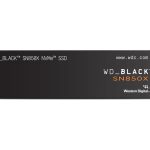
ADATA has been on the frontlines of developing DDR5 memory for the next generation of Intel processors. They have now enlisted the help of MSI and Gigabyte to ensure that their memory is of the best possible quality and can reach the 8400 MT/s data transfer rate on Intel’s next-generation Alder Lake platform.
ADATA Says DDR5 Memory Is The Future & A 8400 MT/s Data Transfer Rate Is Quite Promising For The First Generation
Many expect the standard for the first iteration of DDR5 to be somewhere in between 4800 and 5200, but ADATA looks to be striving to reach speeds of up to 8400 MHz on the first go and make it the future standard. The promise of DDR5 looks great because it offers a massive performance increase over DDR4 with an increase in data transfer rates. It also provides better efficiency which is to be expected with technological advancements.
Enlisting the help of MSI and Gigabyte, ADATA says they are testing its DDR5-8400 on the “latest Intel platforms”. This would most likely be Intel’s upcoming Alder Lake processors using motherboards provided by MSI and Gigabyte. The Alder Lake processors are rumored to have eight high-performance Golden Cove cores and eight energy-efficient Grace Mont cores.
The microarchitecture that DDR5 will first be available is thought to be Golden Cove with further IPC gains coming with the Willow Cove and Cypress Cove microarchitectures. These modules will improve CPU performance by having a higher peak bandwidth with greater efficiency.
Intel Desktop CPU Generations Comparison:
| Intel CPU Family | Processor Process | Processors Cores (Max) | TDPs | Platform Chipset | Platform | Memory Support | PCIe Support | Launch |
|---|---|---|---|---|---|---|---|---|
| Sandy Bridge (2nd Gen) | 32nm | 4/8 | 35-95W | 6-Series | LGA 1155 | DDR3 | PCIe Gen 2.0 | 2011 |
| Ivy Bridge (3rd Gen) | 22nm | 4/8 | 35-77W | 7-Series | LGA 1155 | DDR3 | PCIe Gen 3.0 | 2012 |
| Haswell (4th Gen) | 22nm | 4/8 | 35-84W | 8-Series | LGA 1150 | DDR3 | PCIe Gen 3.0 | 2013-2014 |
| Broadwell (5th Gen) | 14nm | 4/8 | 65-65W | 9-Series | LGA 1150 | DDR3 | PCIe Gen 3.0 | 2015 |
| Skylake (6th Gen) | 14nm | 4/8 | 35-91W | 100-Series | LGA 1151 | DDR4 | PCIe Gen 3.0 | 2015 |
| Kaby Lake (7th Gen) | 14nm | 4/8 | 35-91W | 200-Series | LGA 1151 | DDR4 | PCIe Gen 3.0 | 2017 |
| Coffee Lake (8th Gen) | 14nm | 6/12 | 35-95W | 300-Series | LGA 1151 | DDR4 | PCIe Gen 3.0 | 2017 |
| Coffee Lake (9th Gen) | 14nm | 8/16 | 35-95W | 300-Series | LGA 1151 | DDR4 | PCIe Gen 3.0 | 2018 |
| Comet Lake (10th Gen) | 14nm | 10/20 | 35-125W | 400-Series | LGA 1200 | DDR4 | PCIe Gen 3.0 | 2020 |
| Rocket Lake (11th Gen) | 14nm | 8/16 | TBA | 500-Series | LGA 1200 | DDR4 | PCIe Gen 4.0 | 2021 |
| Alder Lake (12th Gen) | 10nm? | 16/24? | TBA | 600 Series? | LGA 1700 | DDR5 | PCIe Gen 5.0? | 2021 |
| Meteor Lake (13th Gen) | 7nm? | TBA | TBA | 700 Series? | LGA 1700 | DDR5 | PCIe Gen 5.0? | 2022? |
| Lunar Lake (14th Gen) | TBA | TBA | TBA | 800 Series? | TBA | DDR5 | PCIe Gen 5.0? | 2023? |

Although people may just see faster memory with DDR5, there a plethora of benefits and features that come along with this platform to enable high data rates. This includes improved training modes, on-die termination, and two independent 32/40-bit I/O channels (non-ECC/ECC) per module. More features include long-term I/O scalability and on-die single error correction (SEC) ECC, DFE (decision feedback equalizer) to eliminate reflective noise at high frequencies. The ram module will also be operating at just 1.1V which would ensure higher power efficiency while offering much better bandwidth and latencies than DDR4.
With DDR5 on the horizon, being able to reach DDR5-8400 with the first generation is quite promising for the future of DDR5. Micron estimated that DDR5 would be 35% more efficient than DDR4 at the same I/O speeds, but that may be an underestimation at this point. A lot has still not been answered about DDR5, but that will be clarified further along with the development of this new memory.
The post ADATA To Develop DDR5 Memory Modules With Up To 64 GB Capacities & 8400 MHz Speeds For Intel’s 12th Gen Alder Lake Platform by Alex Casas appeared first on Wccftech.
Powered by WPeMatico






